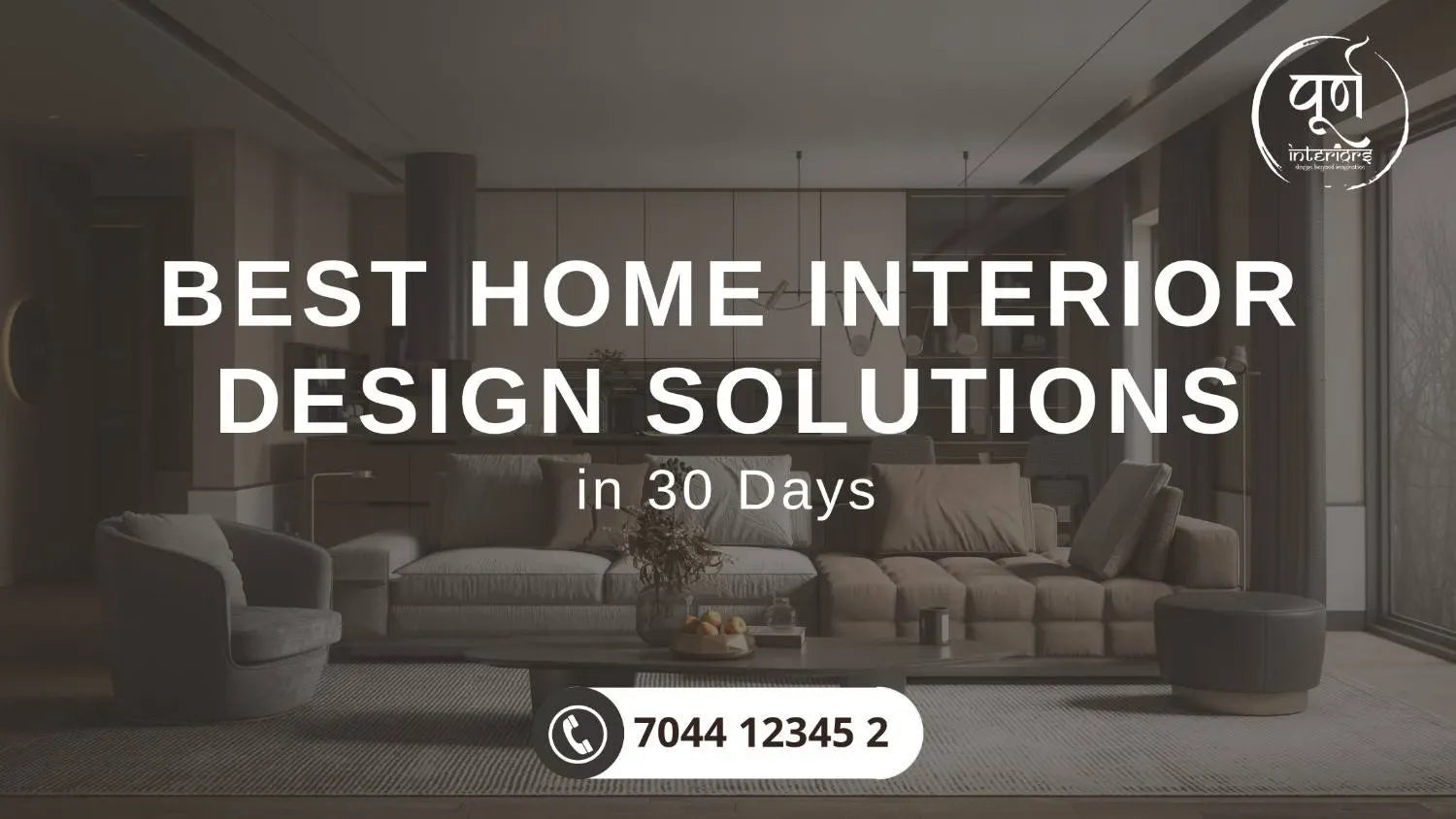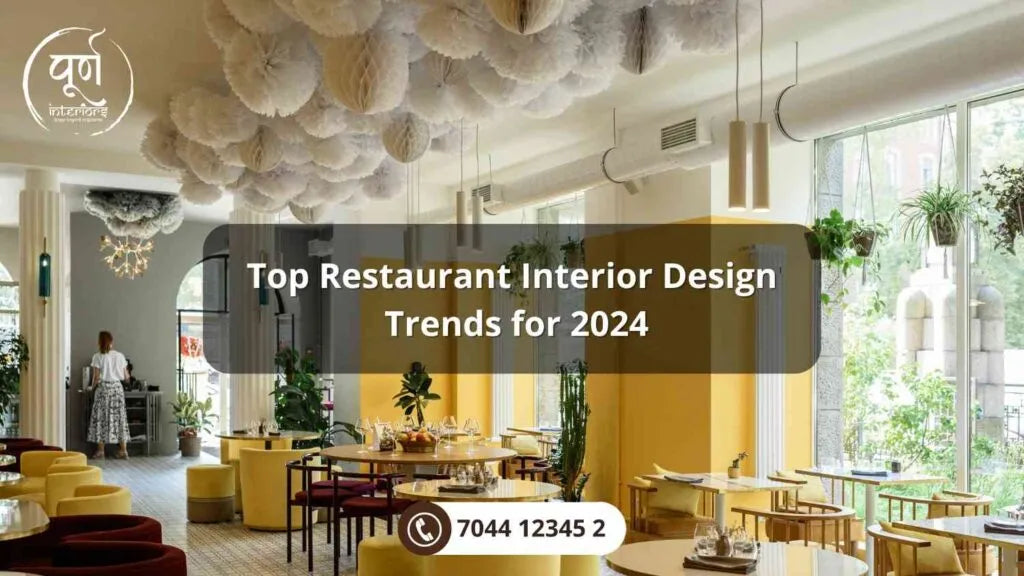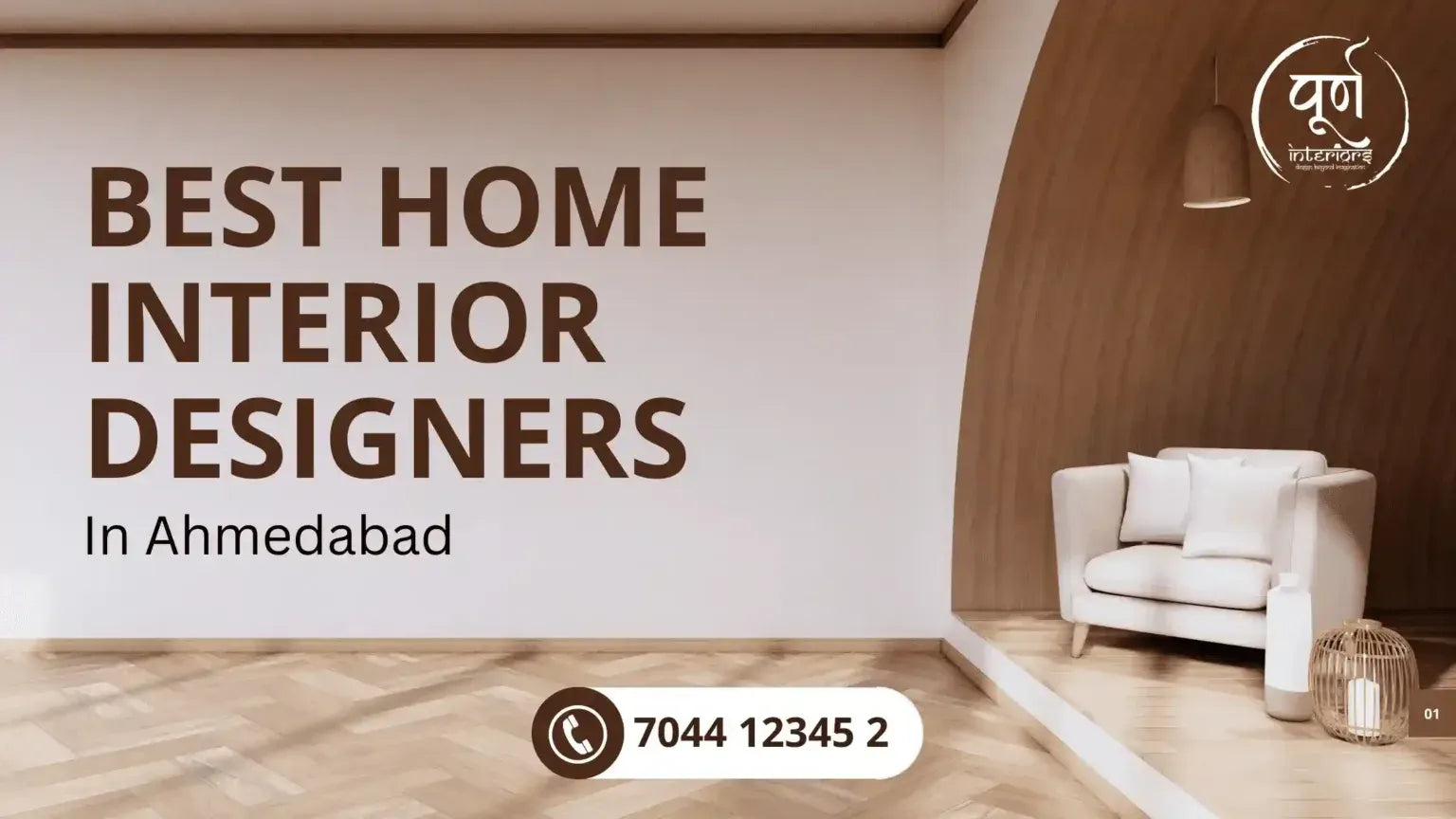Executive Summary: Reimagining the 2BHK for 2026
The interior design landscape for 2026 marks a decisive shift from the sterile, minimalist aesthetics of the past toward a more layered, personal, and purposeful approach. For 2BHK apartments, this evolution is particularly transformative, turning the constraints of a compact footprint into a canvas for innovative design. The core principles of 2026—biophilia, multifunctionality, and emotional connection—are not mere trends but a new design philosophy that prioritizes well-being, sustainability, and personal expression. This report provides a detailed analysis of these overarching themes and presents ten stunning, actionable ideas that empower homeowners to create a space that is not only beautiful but also uniquely theirs. The emphasis has shifted away from making a small space merely appear large and has moved toward making it feel intentionally designed, deeply nurturing, and authentically lived-in.
Chapter 1: The New Paradigm of Home Design in 2026
1.1. From Cold Minimalism to Lived-in Luxury: The Rise of the Sensory Home
The year 2026 signals a definitive break from the stark, all-white, and impersonal interiors that have dominated residential design for the past decade. The new design philosophy is a bold and unapologetic embrace of individuality, focusing on creating "sensorial" spaces that engage all five senses to create a complete experience. The new home is a place that feels "uniquely lived-in, layered, and real," moving away from the "cookie-cutter" aesthetic of the past. This is not a return to chaos, but a purposeful shift toward "curated collections with impact" and "intentional" decor. This evolution stems from a collective desire for a deeper connection to our personal surroundings. The focus has moved from external aesthetics to an internal feeling of warmth and comfort, which is seen as a direct psychological response to the fast-paced, often overwhelming modern world. A home's purpose has expanded; it is no longer just a functional space but a sanctuary for well-being and a canvas for personal storytelling. The design elements reflect this new purpose through a thoughtful combination of rich textures, such as velvet and bouclé, and unexpected materials like terrazzo and reclaimed wood. Even small details, such as sculptural cabinet pulls and vintage lighting with authentic patina, contribute to a space that feels deeply personal and emotionally resonant. This new paradigm is about quality over quantity, a mindset that aligns perfectly with the challenges of a 2BHK apartment. By choosing fewer, higher-quality pieces, homeowners can create a space that is intentionally edited and feels both elegant and purpose-driven. The design celebrates narrative, allowing a home to become a reflection of one's experiences, travels, and interests.
1.2. The Biophilic Imperative: Designing for Well-being and Connection
Biophilic design is a core principle of 2026 interiors, evolving from a niche interest into a "mainstream necessity". This approach is driven by a deep-seated need to foster a connection with nature to improve health and well-being. The practice goes far beyond simply adding potted plants; it involves the direct incorporation of natural elements like wood, stone, and water to improve air quality, reduce stress, and enhance mood. For example, studies have shown that even a view of nature through a window can improve recovery and enhance mood. For residents of compact 2BHK apartments, this design philosophy is particularly critical as it directly addresses the limitations of urban living. By creating "seamless indoor-outdoor spaces," even small homes can feel like a "serene sanctuary". Designers are achieving this by expanding window lines, using sheer curtains to allow natural light to flood a room, and incorporating vertical gardens to save floor space. The use of materials like live-edge wood vanities, rough-hewn stone, and botanical wallpaper reinforces the connection to the outdoors, turning a confined indoor space into a restorative retreat. This approach is a functional solution to the lack of natural exposure in dense urban environments, making a 2BHK not just a place to live, but a tool for physical and mental health.
1.3. The Multifunctional Home: A Fluid and Adaptable Living Space
The home of 2026 is designed with flexibility at its core. The traditional layout of rigidly defined rooms is giving way to spaces that can adapt to the diverse needs of modern life, from remote work to home fitness and entertaining. The concept of "flex-space" is a cornerstone of this trend, allowing a spare bedroom to effortlessly transform into a home office, gym, or media den.
This evolution is a direct response to the need for versatility in compact apartments. The focus has shifted from simply cramming multiple functions into a single room to creating a living environment that is inherently smart and adaptable. The design approach relies on multi-functional furniture, such as sofa-cum-beds, ottoman storage, and extendable tables, which make a room work overtime without compromising on style. This isn't a compromise on design but a fundamental strategy for creating an intelligent home. By using fluid layouts and innovative, modular furniture, designers are creating a sense of "volume" and "uninterrupted visual fluidity" that makes a home feel expansive and intelligent.
Chapter 2: The 10 Stunning 2BHK Interior Design Ideas for 2026
This chapter details ten specific, actionable design ideas that synthesize the overarching 2026 trends and apply them directly to a 2BHK apartment.
1. The Biophilic Sanctuary
This idea is centered on creating a serene, nature-connected living space. It goes beyond mere aesthetics to improve well-being and provide a calm retreat from the urban environment.
Living Green Walls: For a 2BHK with limited floor space, a vertical garden or a preserved moss wall is an ideal way to bring nature indoors. These installations free up valuable floor space while improving air quality and creating a stunning focal point. Natural Materials & Textures: Introduce tactile, earthy materials like deep walnut finishes, rough-hewn stone, and live-edge wood vanities to foster a strong connection to nature. These materials add richness and warmth, creating a space that feels inviting and grounded.
Optimized Natural Light: Maximize the natural light in your home by using sheer curtains or a lack of window treatments to let sunlight flood the interiors. This enhances visual beauty, regulates circadian rhythms, and makes the space feel more open and airy. For areas with limited sun, mirrors can be installed to reflect and distribute light, creating an illusion of a larger, brighter room.
2. Multifunctional Magic: The 'Flex-Space' Apartment
This idea is about making your 2BHK work smarter, not harder, by designing rooms and selecting furniture that serves multiple purposes.
Convertible Furniture: Pieces like sofa-cum-beds, extendable dining tables, and storage ottomans are essential for urban homes. They allow you to host guests, work from home, or dine without committing a permanent piece of furniture to a single function.
Built-in Solutions: Integrate furniture and storage seamlessly into the architecture of your apartment. Consider built-in bookshelves that frame doorways, window seats with hidden storage, or wall-mounted desks that fold away when not in use.
Fluid Layouts: Use open-concept floor plans that connect the living, dining, and kitchen areas. For privacy, use sliding partitions, foldable screens, or even backless bookcases filled with plants to delineate zones without creating rigid, space-constricting walls.
3. The Earthy Palette: A Warm, Grounded Foundation
This trend moves away from sterile whites and grays, embracing a warm and comforting color palette that provides a sense of emotional well-being and a connection to nature.
The New Neutrals: Use deep chocolate browns, rich mocha, caramel, and terracotta as a new neutral base for walls and major furniture pieces. These tones create a "cocoon of comfort" that feels both timeless and grounded.
Warm Accents: Introduce pops of color with warm hues like mustard, muted coral, ochre, and soft yellows. These shades add a playful touch without overpowering the space.
Moody Tones: For a more dramatic effect, pair the earthy foundation with rich and moody blues or a forest green. The combination creates a look that is both grounded and sophisticated.
4. Curated Maximalism: Expressing Personality with Purpose
Maximalism in 2026 is about controlled abundance and intentional storytelling, not chaos. It's a way to infuse a small apartment with personality and a sense of history.
Pattern-on-Pattern: Mix large-scale florals, grand geometrics, or vintage-inspired patterns on wallpaper, rugs, and throw pillows. This creates visual interest and makes a space feel curated and full of character.
Layered Textures: Layer different materials like velvet, chenille, and leather to create a dynamic and inviting space that's a "feast for the senses". For example, pair a plush bouclé sofa with a jute rug and leather-wrapped coffee table.
Gallery Walls: A well-curated gallery wall is a perfect way to display personal art, photographs, and collections. This approach celebrates self-expression and uses vertical space to tell a story without cluttering the floor.
5. The Artisanal Touch: Soulful Pieces with a Story
This trend emphasizes the importance of unique, handcrafted, and upcycled items that add a soulful dimension and narrative to a home. It is a direct reaction to mass-produced decor and fast furniture.
Handcrafted Decor: Incorporate unique items like artisan-crafted ceramics, hand-painted ceilings, or sculptural cabinet pulls. These pieces, born from tradition and skill, carry personal or cultural narratives that enrich the space with meaning.
Upcycled Furniture: Choosing upcycled or modular furniture made from salvaged wood or metal reduces waste and supports sustainable design. These pieces add character and a sense of history, making a home feel cherished rather than brand-new.
Artisanal Forms: The research notes that advances in technology, such as 3D printing, are allowing more homeowners to create custom, unique statement pieces that feel like art. Similarly, pieces with flowing wooden silhouettes and sculptural forms are gaining popularity, blurring the line between functional furniture and artistic expression.
6. Seamless & Sculptural Smart Living
The smart home of 2026 is not a tech lab but a seamless, personal, and intuitive living space. Technology is becoming a discreet, integrated element of the decor rather than a bulky gadget.
Discreet Integration: Hide technology within the design itself. Consider a mirror TV that conceals the screen when not in use or invisible loudspeakers that provide immersive sound without visual clutter.
Intuitive Automation: Use smart plugs, thermostats, and lighting systems that learn your habits and adjust automatically to your schedule. Voice assistants like Alexa or Google Nest serve as a central, non-invasive hub to control these devices.
Sculptural Forms: The new design aesthetic favors technology that complements the decor. Opt for modular lighting systems that can be configured into dynamic, sculptural shapes or minimalist devices that blend in seamlessly. This approach turns tech into a subtle tool that enhances your day without shouting about it.
7. The Edwardian and Modern Rustic Fusion
This trend marries the calm, comfortable elegance of Edwardian design with the raw, honest materials of Modern Rustic. The result is a sophisticated yet grounded space that feels both traditional and fresh.
Edwardian Elegance: Integrate elements like high ceilings, arched mirrors, and botanical or floral wallpaper to create an antidote to years of hard edges and bare walls. This brings a sense of refined grandeur and curated charm to a home.
Modern Rustic Foundation: Ground the space with honest materials. Use artisan-crafted wood, warm stone, and textural elements like leathered stone or travertine. These materials provide a connection to the earth and a feeling of warmth and durability.
Voluptuous Forms: Soften the overall aesthetic with curvy, oversized furniture that turns functional pieces into sculptural elements. These graceful, continuous curves are an antidote to the structured minimalism of the past and make a space feel more approachable and cozy.
8. The Vertical Vistas: Maximizing Every Inch of Space
This idea is a cornerstone of smart 2BHK design, focusing on the strategic use of vertical space to create a sense of height and provide essential storage.
Floor-to-Ceiling Storage: Install tall, built-in bookshelves or storage units that draw the eye upward and make a room feel more voluminous. This strategy frees up central floor space, which is critical in a small apartment.
Floating Shelves & High-Impact Storage: Utilize otherwise unused spaces by installing floating shelves above doors or in tight corners. This provides storage for books or decorative items without cluttering the floor.
Hanging Greenery: Add hanging planters from the ceiling or use a ladder-style shelf to display plants. This approach brings in the biophilic element while saving valuable floor space, a key consideration for compact living.
9. The Power of Reflection: Light and Space as Design Tools
The strategic use of mirrors and reflective surfaces is a classic "visual trick" for a small apartment, allowing you to maximize natural light and create an illusion of a more expansive space.
Strategic Mirror Placement: Placing a large mirror on a wall or behind a dining table can reflect light and create a "space-boosting illusion". In a bedroom, a mirror on a wardrobe door can create the impression that the room is larger and brighter.
Reflective Surfaces: Choose materials with glossy finishes on cabinets, floors, or decorative items to bounce light around the room. This simple change can make a space feel airy and open.
Clutter-Free Reflections: To ensure this strategy is effective, it is essential to maintain a clutter-free environment. Too many objects can lead to a chaotic and overwhelming reflection, undermining the intended effect of spaciousness.
10. Sustainable Sophistication: Conscious and Conscious Design
This trend redefines luxury by focusing on ethical, eco-friendly materials and mindful consumption without sacrificing style.
Eco-Friendly Materials: Incorporate materials like reclaimed wood, bamboo flooring, and cork walls, which are gaining traction for their renewability and low environmental impact. For textiles, opt for natural fibers like linen and wool, which are sought after for their organic feel and reduced environmental footprint.
Upcycled Furniture: Embrace modular and upcycled furniture made from salvaged materials. This approach reduces waste and provides a unique, custom look.
Smart Eco-Tech: Use smart home technology to reduce energy consumption and waste. Eco-friendly window films can block UV rays and reduce heat gain, cutting cooling costs by 20-30% without major renovations.
Chapter 3: Actionable Recommendations and Implementation
3.1. The New Materials Palette: A Sourcing Guide for 2026
The following table provides a guide to the key materials and their applications, aligning with the 2026 design principles for a 2BHK apartment.
| Material Category | Specific Examples | Primary Benefit | Best Application |
|---|---|---|---|
| Woods | Reclaimed wood, Live-edge wood, Walnut | Sustainability, Texture, Warmth | Furniture, Vanities, Flooring |
| Stone & Minerals | Rough-hewn stone, Travertine, Quartz | Durability, Organic Form, Timelessness | Countertops, Accent walls, Decor |
| Textiles | Velvet, Bouclé, Linen, Jute, Wool | Luxurious feel, Tactile richness, Sustainability | Upholstery, Rugs, Curtains, Throw pillows |
| Finishes | Matte black, Warm gold, Copper, Distressed leather | Expressive detail, Warmth, Lived-in aesthetic | Fixtures, Hardware, Upholstery |
| Surfaces | Terracotta, Cork, Recycled tiles | Connection to nature, Sustainability, Warmth | Flooring, Walls, Planters |
| Novel Materials | Mycelium, Bio-based resins, Recycled plastics | Cutting-edge sustainability, Unique aesthetics | Lamps, Decor, Small furniture |
3.2. Seamless Technology Integration for a 2BHK
Integrating smart technology is a key element of the 2026 home, but for a 2BHK, it must be both functional and discreet. The following table provides a guide to essential, often landlord-friendly, smart home devices.
| Device Type | Key Benefit | Recommended Product | Key Feature | Landlord-Friendly Note |
|---|---|---|---|---|
| Smart Lighting | Convenience, Ambiance, Energy Savings | Wyze Bulb Color | Dimmable, voice-controlled, Wi-Fi connected | Plug-and-play, no-rewiring needed |
| Smart Plugs | Automation, Scheduling, Efficiency | Kasa Wi-Fi Smart Plug 15A | Compact, voice-controlled, works with any device | Plug-and-play, portable |
| Smart Security Camera | Peace of mind, Security | eufy Outdoor Cam E220 | Compact, affordable, 2K resolution | Can be mounted with adhesive, no drilling required |
| Smart Door Lock | Keyless entry, Remote access | Eufy Smart Lock S330 | Fingerprint recognition, integrated camera, two-way audio | Requires landlord approval, some models are DIY-friendly |
| Smart Speaker | Central hub, Voice control | Amazon Echo Dot | Compact, affordable, wide compatibility | Completely non-invasive, portable |
Conclusion: Designing for Well-being and Individuality
The interior design trends of 2026 signal a return to a more human-centric approach to the home. For residents of 2BHK apartments, this means a shift away from making a small space merely "look big" and toward making it feel intentional, nurturing, and authentic. The trends are not about adopting a single style but about embracing a design philosophy that prioritizes well-being and personal expression. By integrating the principles of lived-in luxury, biophilia, and multifunctionality, homeowners can create a space that is not only visually stunning but also deeply connected to their lifestyle, well-being, and personal story. The future of design is a home that works for you, feels like you, and truly nurtures you, transforming the constraints of a small footprint into an opportunity for intelligent and soulful living.









